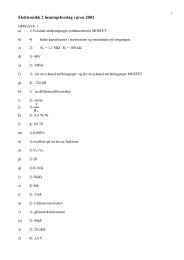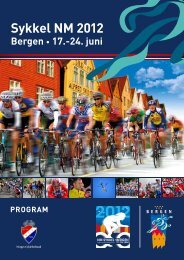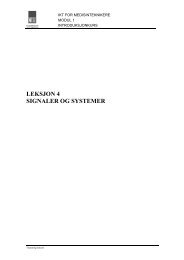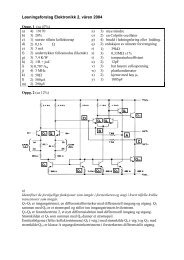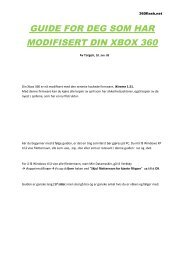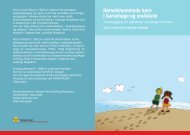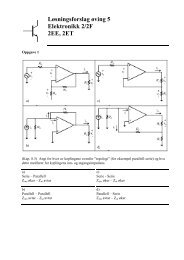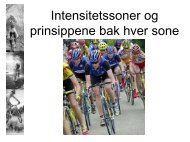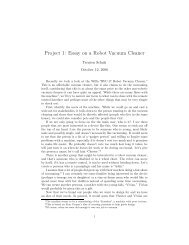The Online World resources handbook
The Online World resources handbook
The Online World resources handbook
Create successful ePaper yourself
Turn your PDF publications into a flip-book with our unique Google optimized e-Paper software.
Cheaper and better communication http://home.eunet.no/~presno/bok/13.html<br />
Capture trip information to a log file. Register the following information: * number of<br />
minutes connected * modem speed * number of characters sent. Some communication<br />
programs can do this automatically for you.<br />
On services charging for time and volume<br />
Log the following information: * number of minutes connected * modem speed *<br />
number of segments or packets (measurements of volume) You need these numbers to<br />
estimate the average volume of data transferred by minute. Here are some general<br />
experiences and hints:<br />
Long streams of data without stops are cheaper through services that only charge by<br />
the minute. Retrieving software is a typical high volume application.<br />
Trips that include navigation from conference to conference, with a little bit of up<br />
and downloading here and there, make the average transfer speed fall dramatically.<br />
Surfing the <strong>World</strong> Wide Web is usually in the same class. It's like driving through a big<br />
city at 150 kilometers per hour. Red lights will considerably reduce your average speed.<br />
<strong>The</strong> actual transferred volume of text per minute will differ from place to place<br />
(geographically), and often also from call to call. It depends on factors like:<br />
How fast you can enter commands and how much time you spend staring at the<br />
display before pressing keys,<br />
How long it takes for an online service to react to your commands. For example,<br />
the response time on CompuServe at 04:00 GMT on a Friday morning (it is<br />
evening in the U.S.) is much worse than at 10:30 GMT on a Sunday morning. By<br />
now, most North American users are asleep.<br />
<strong>The</strong> load on your packet data network while you use the service (or the amount of<br />
noise and retransmission, when calling direct),<br />
<strong>The</strong> type of modem you are using (speed, compression level),<br />
<strong>The</strong> number of commands you (or your scripts) have to enter during your online<br />
visit. An increase in the number of commands reduces the average transfer speed.<br />
<strong>The</strong> amount of transfer overhead for color and screen handling (like, VT 100 or<br />
html codes) that is transferred with your text.<br />
Your use of menus and help texts while online, or whether you come as "expert"<br />
with a minimum of prompts.<br />
Whether your browser is set to capture all pictures and sound files that it comes<br />
across, or just the text.<br />
It is impossible to calculate the practical effects of these items. You will just have to bear<br />
them in mind when estimating typical jobs, measuring speeds, calculating costs, and<br />
comparing networks.<br />
Finding the optimal network for your needs will take time, but it is well worth the<br />
effort. Expect the figures to surprise you.<br />
<strong>The</strong> network services in this chapter will often give you better quality transfers than<br />
a direct call. On the other hand, calling direct may give more characters transferred per<br />
minute. <strong>The</strong> average speed may drop dramatically when using packet data services.<br />
<strong>The</strong> cost of using PDN services<br />
Most commercial online services can be reached through national PDNs, but you may<br />
have problems finding the correct NUA (Network User Address) to get there. Your PDN<br />
may not have a directory of available "electronic telephone numbers" for you to consult.<br />
<strong>The</strong> Norwegian PDN, Datapak, used to be my only alternative for access to foreign<br />
online services. At the time, I thought the cost was acceptable. Not so any more.<br />
My applications require that data be pumped back and forth at maximum speed. On<br />
network services charging by a combination of volume and time, 80 percent of my costs<br />
are typically for volume, while 20 percent is for connect time.<br />
When I logged out after a successful visit to CompuServe through Datapak, the two<br />
services gave similar reports:<br />
5 of 7 23.11.2009 15:48



